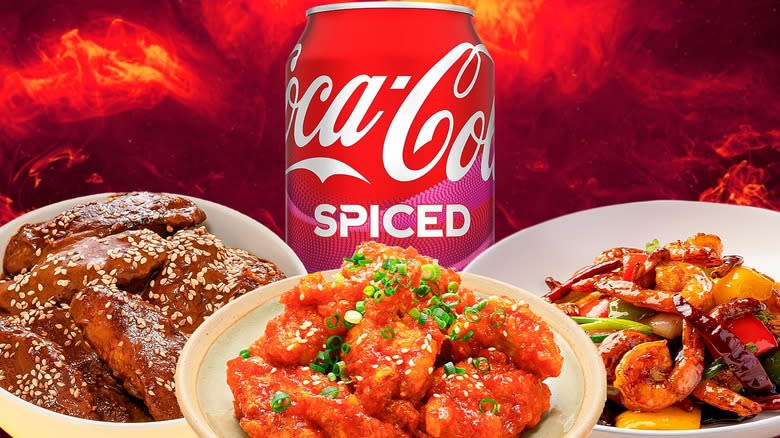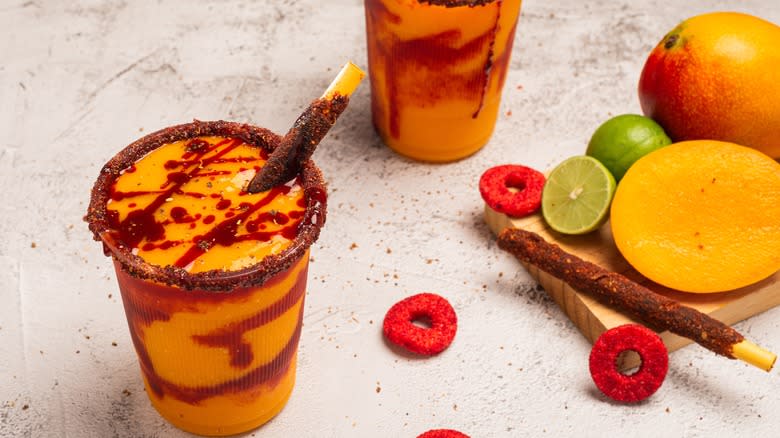How 'Swicy' Food And Drinks Are Taking Over 2024

The timeline of food fads is fascinating stuff -- when do they emerge, how long do they stick around, and at what point to they go from fad to trend to just plain food? With sweet and spicy foods, we'd say they're about in the middle of the cycle. The current craze seems to have kicked off with the 2010 introduction of Mike's Hot Honey, aka the sweetener that spawned a thousand imitators. In 2024, however, marketers are flogging the stuff with a new (ish) term: "swicy." Even this portmanteau word, clearly a mashup of "sweet" and "spicy," isn't all that innovative as it was TikTok-trendy back in 2023.
Among the sweetly-spiced specialties launched this year, one of the first and most prominent was arguably a swicy fail -- Coca-Cola Spiced was not even remotely spicy, and its flavor seemed to lack non-incendiary spices such as cinnamon, garlic, or really anything other than raspberry (not a spice). Starbucks, however, successfully achieved swiciness with its chile powder-enhanced lemonade refreshers as part of its spring lineup, while Starbucks Reserve roasteries offered even fancier options like hot honey affogatos and hot honey espresso martinis. Yes, hot honey is still going strong in its second decade, as other new products that are probably intended to make 2024 the Summer of Swiciness include a hot honey-pepperoni pizza with a croissant crust from California Pizza Kitchen that came out in March and a hot honey-pepperoni DiGiorno stuffed crust pizza that followed in May.
Read more: 16 Little-Known Facts About Salt
Swicy Dates Back A Lot Longer Than You Might Think

Mike's Hot Honey may have been seen as an innovative product back in 2010 when it first came out, but the idea of combining sweet and heat (sweat? umm, no, that won't work for obvious reasons) dates back at least as far as the ancient Romans, who liked to eat their eggs with honey and pepper. They also made candies from dried fruit, honey, pepper, and salt, thus also anticipating the sweet-and-salty trend by several millennia. In many Asian countries, combining sweet and spicy elements has long been a core principle of flavor balancing. One well-known example is Thailand's nam chim kai, or sweet chili sauce.
Over in the New World, some consider the Aztecs to have been early adapters of swiciness, but this isn't quite true since xocolatl was typically unsweetened. This was also the case with Mayan champurrado, so it seems both cultures were more into the bitter and spicy flavor combo (Mesoamerican marketers could have called it "bicy"). In more modern times, sweet-and-spicy mangonadas have long been a favorite summertime refresher and have been embraced by the U.S. to the extent that Baskin-Robbins added them to the menu in 2021. Dulces enchilados, aka chilito candies, are another south-of-the-border specialty that crossed over into Texas by the '90s. By 2021, they, too, were trending on TikTok, so who knows? Swicy Skittles could be coming soon to a convenience store near you.
Read the original article on Mashed.

 Yahoo Lifestyle
Yahoo Lifestyle 
